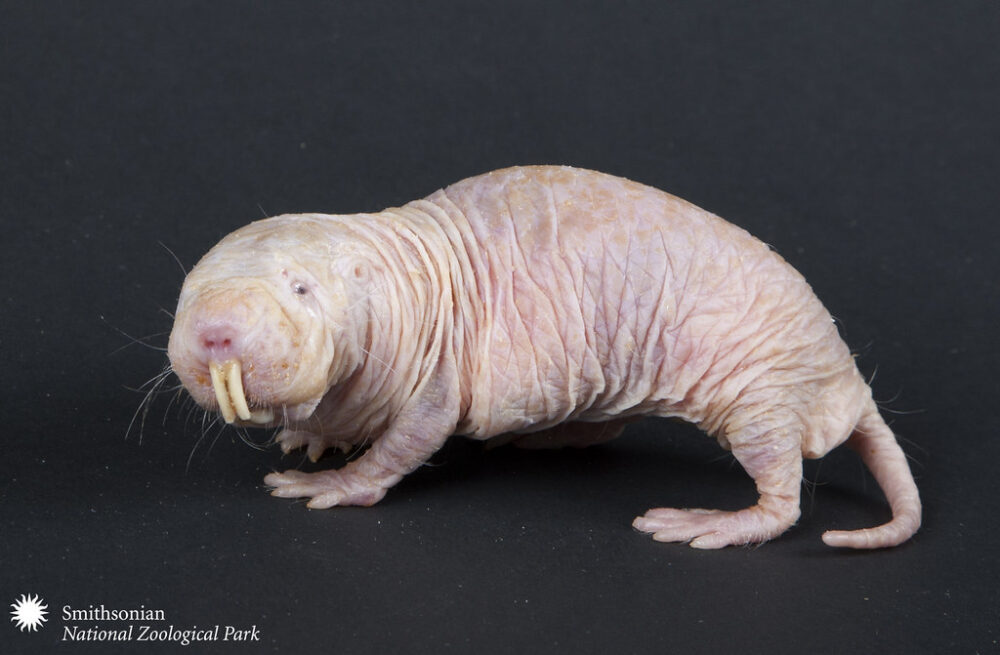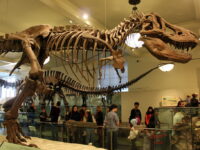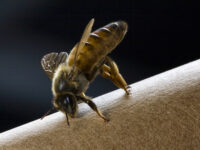Meet the naked mole rat. It’s no typical rodent — it lives underground in Africa, maintains a sophisticated social structure, gets all its food and water from underground tubers, has no fur, and is almost blind. But most impressively, it seems to escape common rules of mortality. Larger animals live longer as a rule, but while the larger rodents rarely live past 10 years, the 5-inch-long naked mole rat can make it up to 30 years old. It shows no normal signs of aging and almost never gets cancer. This makes it a valuable non-traditional model organism in longevity and cancer research.
Non-traditional model organisms are those not commonly used for science, as opposed to the familiar lab rats and mice. They are singled out for their unique biological features. In naked mole rats, researchers study the mechanisms that prevent their cells from deteriorating as this is the cause of both aging and cancer. By studying these animals in captivity, researchers have identified possible protection mechanisms at the genetic, cellular, and protein levels. Most of these mechanisms protect them from cancerous mutations through efficient cellular processes, maintenance, and cleaning.
Meet the naked mole rat. It’s no typical rodent — it lives underground in Africa, maintains a sophisticated social structure, gets all its food and water from underground tubers, has no fur, and is almost blind.
The naked mole rat genome has been sequenced and compared to those of rats and mice. In these comparative studies, they measured upregulated and downregulated genes and found that DNA repair pathways and cellular protective mechanisms are more active in naked mole rats. More active DNA repair means that cancer-causing mutations are caught and removed sooner. It is not surprising, then, that naked mole rats have a very stable genome. They also have a stable epigenome, which means the chemical markers on DNA are not likely to change.
Telomeres, the DNA structures at the ends of chromosomes, are connected to aging, so researchers are especially interested in how they work in naked mole rats. Telomere replication is a double-edged sword, as it prevents aging but can also introduce mutations. It turns out that naked mole rats replicate their telomeres more often than other mammals. It is likely they are able to do this with minimal damage because of their genome stability and enhanced DNA repair mechanisms.
Naked mole rats replicate their telomeres more often than other mammals. It is likely they are able to do this with minimal damage because of their genome stability and enhanced DNA repair mechanisms.
Another way naked mole rats protect themselves is protein surveillance. If proteins are mutated, denatured, or incorrectly folded, they can cause cancer, and the longer they remain in the cell, the more dangerous they are. Naked mole rat cells identify and destroy damaged proteins faster than other mammals. They also exhibit higher autophagy, or cell self-destruction, rates. This means they have a higher tolerance for oxidative stress, which is thought to have evolved due to their harsh underground habitat that has high levels of carbon dioxide and ammonia. Although they have low antioxidant levels, they are unaffected by oxidation because damaged components are immediately cleaned out.
A final line of defense against cancer lies with cellular mechanisms. In cancer cells, the cell cycle of division and replication is out of control, but naked mole rats are especially good at regulating it through contact regulation, or making sure cells do not become too tightly packed. They also preserve cells’ ability to divide as they age. Additionally, these rodents have a low metabolic rate, which minimizes toxic byproducts of metabolism, and a higher tolerance for toxins.
These rodents have a low metabolic rate, which minimizes toxic byproducts of metabolism, and a higher tolerance for toxins.
Note that only a few of these findings have been medically confirmed and are rather simply speculations based on measurements. All have been suggested by in vitro studies, and in vivo studies will be needed to get the full picture. Additionally, other animals, such as blind mole rats, elephants, and whales, show similar longevity and resistance to disease, so they also have potential as non-traditional model organisms. Searching for similarities between these animals’ adaptations may help researchers zero in on specific protective mechanisms. With more research, our fellow mammals may be able to save human lives.
Source: 1
Image Source: Flickr






